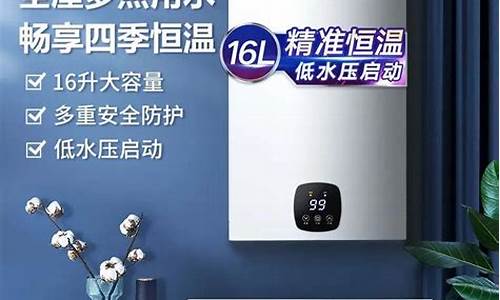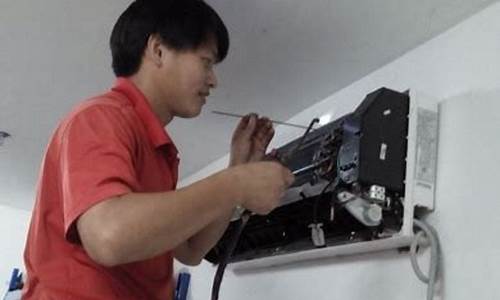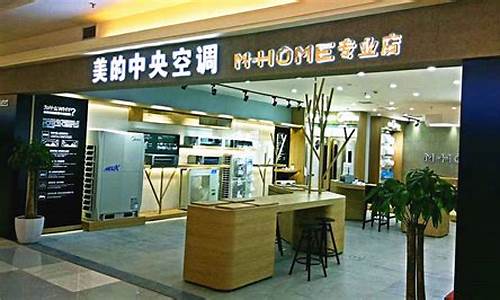日本松下公司在哪_日本松下代理
1.松下的视觉系统好么?与康耐视,基恩士相比如何,有机会去康耐视的还是松下的代理商?
2.详细介绍下日本松下公司
3.帮我介绍一下“松下集团”

上海会通自动化科技发展有限公司是松下马达事业部的全球总代理,也是松下的战略合作伙伴,你寻一下价钱就知道了,价格很低。如果有什么技术问题可以咨询 024-31893403(沈阳办事处)田先生
松下的视觉系统好么?与康耐视,基恩士相比如何,有机会去康耐视的还是松下的代理商?
苏州致烨电子科技有限公司、深圳市拓普松下贴片有限公司等。根据查询松下电器机电(中国)有限公司官网显示,中国松下贴片代理有苏州致烨电子科技有限公司、深圳市拓普松下贴片有限公司、深圳市惠科特科技有限公司、深圳卡士伯科技有限公司、深圳市托普科实业有限公司,分别是2009年、2012年、2010年、2020年代理的。松下贴片是一种高精度、高效率的电子生产设备,广泛应用于电子制造业、通信产业、汽车制造业等各个领域。
详细介绍下日本松下公司
不错,各有各的优势。国内也有很多专业品牌,推荐了解研祥金码,产品物美价廉,特别是旗下的R-3000系列读码器,能够快速、全方位的条码捕捉读取。内置丰富的IO接口,支持复杂现场需求。集成多组可控光源,实现光源分路独立控制,响应你的柔性化生产需求。
通过研祥金码官方网站(www.evocjm.com),可在线获取相关技术文件、工具、驱动及常见问答库,即时享受专业官方服务。您还可以通过在线沟通工具,直接发起对话申请,或提交留言,我们的客服人员将第一时间与您取得联系。
您随时随地拨打4000-697-797服务热线,均可获得产品介绍、购买咨询、售后处理等人工服务,您反馈的任何问题,都将得到专业贴心的解答。
帮我介绍一下“松下集团”
松下电器创立于1918年
1918年
创业人松下幸之助在大阪市福岛区大关町创办了松下电气器具制作所,并开始生产灯泡插座以双灯泡用的旋转式插座
1922年
在大阪市福岛区大关町兴建第一个总部工厂
1923年
研制推销了自行车用的弹头型灯具,采用代理店制度,面向全国扩大销路
1927年
研制推销了自行车用的方型灯具,由这一产品开始使用"National"的商标
1929年
将公司名称改为"松下电器制作所",并制定了纲领和信条
1931年
开始生产收音机和干电池
1932年
规定了创业纪念日,宣布了本公司真正的使命
设立了贸易部(于1935年成为松下电器贸易株式会社)
1933年
采用事业部制度
将本部工厂迁至在门真市新建的工厂
作为松下电器应该奉献给社会的5种精神(1937年将其改为7中精神)
1934年
开办"店员(员工)培育学校"
1935年
成立松下电器贸易株式会社
将公司改组为股份有限制,成为松下电器产业株式会社
采取分公司制度(成立松下无线株式会社等9个公司)
1938年
通过松下电器贸易公司开始了进口业务
1940年
举办了第一届经营方针发表会
1946年
成立劳动工会组织
1952年
与中川机械株式会社(即现在的松下冷机)进行合作
与荷兰的飞利浦公司进行技术合作,并成立了松下电子株式会社
1953年
开设了中央研究所
开设了纽约办事处
1954年
与日本胜利公司(JVC)进行合作
1955年
成立九州松下电器株式会社
1956年
成立大阪电气精器株式会社(即现在的松下精工)
1957年
全国性的开始设立销售店
1958年 成立松下通信工业株式会社
1959年
成立美国松下电器公司
1960年
开始推销彩色电视机
1961年
松下幸之助就任会长;松下正治就任社长
在泰国成立了"二战后"第一家国外生产工厂
1962年
与东方电机株式会社(即现在的松下电送系统株式会社)进行合作
1968年
松下电器历史馆正式开馆
1969年
成立松下寿电子工业株式会社
松下电器技术馆正式开馆
1970年
在大阪万国博览会设立"松下馆",展示"时代资料存放器"等产品
1971年
在分布于全国的展厅上开设了消费者咨询中心
在纽约证券交易所上市
1973年
松下幸之助就任顾问;高桥荒太郎就任会长
年销售额突破1兆日元
1976年
成立松下电子部品株式会社
1977年
松下正治就任会长;山下俊彦就任社长
成立松下住设机器株式会社和松下产业机器株式会社
1979年
成立松下电池工业株式会社
1986年
谷井昭雄就任社长;山下俊彦就任会长
开始在日本国内使用"Panasonic"的商标
1987年
将松下集团所属各公司的财务年度决算统一定为3月底
1988年
合并松下电器产业株式会社和松下电器贸易株式会社
1989年
创始人松下幸之助顾问逝世(享年94岁)
1990年
收购美国MCA公司
1991年
制定环境管理基本方针(松下环境宪章)
1993年
森下洋一就任社长;谷井昭雄就任会长
获得松下电子工业株式会社100%的股权
1995年
松下电器产业株式会社和松下住设机器株式会社合并
转让出美国MCA公司的80%的控股股份
1996年
开始销售DVD播放器
1997年
引进公司内分公司制度
1998年
创业80年
1999年
引进CCM(资本成本重视经营管理)
2000年
松下正治就任名誉会长;森下洋一就任会长;松下正幸就任副会长;中村邦夫就任社长
2001年
推出"创生21计划"
在历经了89个年头之后,已经成为电器产品的世界级巨头
2007年世界500强企业排名第59位,销售额778亿7千1百万美元
松下电器产业株式会社(日语:松下电器产业株式会社、まつしたでんきさんぎょう;英语:Matsushita Electric Industrial Co., Ltd.)是日本的大型电器制造公司,总公司设於大阪。
松下电器社长大坪文雄于2008年1月10日表示,将在2008年10月将公司名称由松下电器产业更名为「パナソニック」(Panasonic)。同时「ナショナル」(National)商标将在2009年废止,统一使用「パナソニック」。[1]
松下电器於1918年由松下幸之助在大阪创立,创业时做的是电灯灯座。1927年制作自行车用的车灯。1951年松下幸之助到美国,打开了松下电器在美国的市场,最初的产品是电视机,他与飞利浦签定了技术合作合约,将西方的技术带到日本。因此让松下电器从1950年代到1970年代有突破性的成长。
松下电器的产品线极广,除了家电以外,还生产数位电子产品,如DVD、DV(数位摄影机)、MP3播放机、数位相机、液晶电视、笔记型电脑等。还扩展到电子零件、电工零件(如插座盖板)、半导体等,间接与直接转投资公司有数百家。
旗下品牌
* National:1922年起创立的品牌,寓意“国民的”。台湾中文名称是“国际牌”。目前仅在日本国内的白色家电产品使用此品牌。National品牌将於2009年停止使用。
* Panasonic(香港译名:乐声,中国大陆译名:松下电器):1955年起创立的品牌。松下电器进军美国时,原有的National品牌在美国已有公司注册,因此创立此品牌。现今为松下电器的主要品牌。
* Technics:为松下的电子琴、音响专用品牌(在香港已经并入 Panasonic)。
* Quasar:1974年松下购并美国摩托罗拉公司的家用电子部门时所继承的品牌,仅在北美洲的电子视听产品使用。
* M:为松下出品的电子零件(电容器等)因细小而无法打上品牌全名时所使用的替代标章。
* KDK:为松下出品的空气流动电器,其产品和National一样,每有新的KDK产品推出,National都一定有同功能,同样式的产品推出,这是由於松下电器以两个品牌,去占有两个不同的市场:KDK以电工材料公司为目标,而National以家庭为主。
* Rasonic:(乐信牌)原为香港的信兴集团旗下的子公司信兴电工工程有限公司自行开发的一个品牌。而松下电器中港澳的总代理为信兴集团。於1994年,松下和信兴成立合资公司松下信兴机电有限公司,自此Rasonic成了松下的品牌。
* JVC :(香港曾译为星牌)JVC (Japan Victor Company)成立於1927年,是当时美国的留声机及黑胶唱片的领导者Victor Talking Machine Company的子公司。1930年,JVC生产留声机及黑胶唱片。1932年,JVC开始生产收音机。1939年,展出日本第一台电视机。二战期间,日本公司与外国的合作夥伴断绝关系。1929年,JVC的大部份所有权转移到美国无线电公司(RCA)与胜利音产的合资公司RCA-Victor。直到1953年,JVC由松下电器所有,现在松下电器拥有JVC超过36.9%的股权。
另外,松下电器还有三角形的「三叶松」标章,是松下电器的公司标章,有「坚忍不拔」、「生成发展」、「协力一致」三种含义。
Matsushita Electric Industrial Co., Ltd. (松下电器产业株式会社, Matsushita Denki Sangyō Kabushiki-gaisha?) (TYO: 6752, NYSE: MC) is a Japanese electronics manufacturer based in Kadoma, Osaka Prefecture, Japan. It produces products under a variety of names including Panasonic and Technics.
The company was founded by Konosuke Matsushita in 1918 to sell duplex lamp sockets. In 1927, it produced a bicycle lamp, the first product it marketed under the brand name National. Since then, it has become the largest Japanese electronics producer. In addition to electronics, Matsushita offers non-electronic products and services such as home renovation services.
Matsushita was ranked the 59th company in the world in 2007 by the Forbes Global 500 and is among the Worldwide Top 20 Semiconductor Sales Leaders.
The common English pronunciation is /?mɑtsui?t?/, while the proper Japanese pronunciation for the company is /mats?(i)ta/.
On January 10, 2008, the company announced that on October 1, 2008 it will change its name to Panasonic Corporation, unifying the Matsushita, National and Panasonic brands under the new corporate name.
Brands and divisions
Matsushita produces electronic products under a variety of names, including:
* Panasonic (home appliances for the overseas market, personal electronics, audio/video equipment, microchips, automotive components)
* National (home appliances for the Japanese market)
* Nais (components for automated systems, replaced by Panasonic in 2004)
* Quasar (lower-priced televisions, video equipment and appliances in the North American market—being phased out)
* Technics (audio equipment)
* Ramsa (professional audio equipment)
* Rasonic (as of 1994, home appliances for the Chinese market).
In many computer systems, Matsushita devices identify themselves as "MATSHITA", to fit the limit of 8 characters imposed by Microsoft Windows device handlers.
History
Matsushita Electric Industrial Co., Ltd. in Kadoma, Osaka, Japan. Foreground left: Matsushita Electric House of History; behind: Corporate R&D laboratories
Matsushita Electric Industrial Co., Ltd. in Kadoma, Osaka, Japan. Foreground left: Matsushita Electric House of History; behind: Corporate R&D laboratories
Matsushita was founded in 1918 by Konosuke Matsushita and operated factories in Japan and Asia through the end of World War II, producing electrical components and appliances such as light fixtures, motors, and electric irons.
After World War II, Matsushita regrouped and began to supply the post war boom in Japan with radios and appliances. Matsushita's brother-in-law, Toshio Iue founded Sanyo as a subcontractor for components after WWII. Sanyo grew to become a competitor to Matsushita.
In 1961, Konosuke Matsushita traveled to the United States and met with American dealers. Matsushita began producing television sets for the U.S. market under the Panasonic brand name, and expanded the use of the brand to Europe in 1979
The company used the National trademark outside of North America during the 1950s through the 1970s. It sold televisions, radios, and home appliances in some markets. The company began opening manufacturing plants around the world. It quickly developed a reputation for well-made reliable products.
The company debuted a hi-fi speaker in Japan in 1965 with the brand Technics. This line of high quality stereo components became worldwide favorites. The most famous product still made today is the SL-1200 record player, acknowledged for its high performance, precision, and durability.
During the 1970s, Matsushita further expanded into the U.S. market by purchasing Quasar from Motorola in 1974 and buying out MCA-Universal in 1989. Many American employees who transferred over from Motorola felt that they were discriminated against and filed a lawsuit in 1986 after three-quarters of American managers from the Quasar division were let go.
The company then became a major target of anti-Japanese sentiment among workers in the United States. However, the Japanese stock market crash of 1989–1990 caused Matsushita's international power to wane: the company sold many of its foreign assets in the 1990s, including Universal to Edgar Bronfman, Jr. of Seagram's.
In November 1999, the Japan Times reported that Matsushita planned to develop a "next generation first aid kit" called the Electronic Health Checker. At the time, the target market was said to be elderly people, especially those living in rural areas where medical help might not be immediataly available, so it was planned that the kit would include support for telemedicine. The kits were then in the testing stage, with plans for eventual overseas distribution, to include the United States.
In recent years the company has been involved with the development of high-density optical disc standards intended to eventually replace the DVD and the SD memory card.
Since the spring of 2004, Matsushita has used Panasonic as its primary global brand. The matsushita.co.jp website now redirects to panasonic.co.jp.
On January 19, 2006 Matsushita announced that, starting in February, it will stop producing analog televisions (then 30% of its total TV business) to concentrate on digital TVs.
On January 10, 2008 Matsushita announced that it intends to change the company name to Panasonic, effective October 1, 2008. The decision is pending on approval at the firm's annual shareholder's meeting in June.
声明:本站所有文章资源内容,如无特殊说明或标注,均为采集网络资源。如若本站内容侵犯了原著者的合法权益,可联系本站删除。












